Introduction
Modern contemporary artists have excelled in exploring the human form to create a sublime narration that creates evocative symbolism of the human body and its narratives. This paper examines the works of two contemporary artists Helen Chadwick and provides an analysis of their works.
My Outline Theme And Topic and its importance
My theme is the arrangement of a geometric figure to symbolize the diversity of form and narration with pictures. The circle with the segment represents multiple diversity of life and objects. Each segment with a different shade shows the gradient and diversity of everyday objects. A sample figure of my work is shown below.
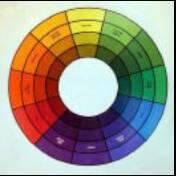
The artists whose work has been examined in the paper have worked on the same theme. Their work relates to my theme as they have explored the geometric and human forms and created a narration of nature. Their work is important, as it will help me to further influence and improve my work.
Helen Chadwick
Helen Chadwick (1953 – 1996) was a British feminist artist who created a number of artworks that examined the image and role of women in society. She has used many different and nonconventional materials to create different artworks. She has used materials such as dead bodies of animals, meat, human embryos, plastic, bronze, lacquer, and photography, she has created a stunning collection of artwork that serves as inspiration for many artists. She died in 1996 from a viral infection. (Bukantas Ann, 2005).
Helen Chadwick and Mutability
Helen Chadwick’s work called ‘Of Mutability is regarded as one of her best works. It has been used as a central piece in many art collections and exhibitions. In this work, Helen has made a different creation of herself in response to existing conceptions of women as externally generated images. (Land M, 1997).
Power (Powers et all, 1997) had an interesting comment on mutability, as applied to anthropology and feminist theories. According to her while biologists put gender into nature, and the difference between sex and gender is no difference at all, on the grounds that sex ‘is as culturally constructed as gender; indeed, perhaps, it always already was gender.
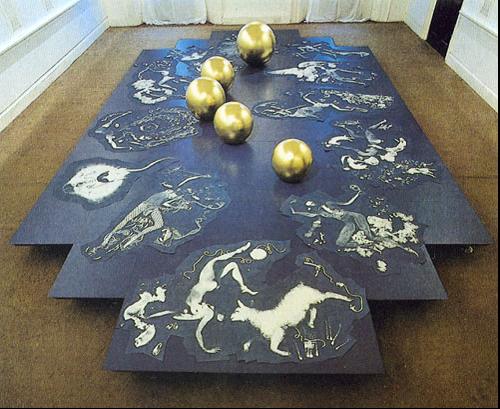
Helen was nominated for the Turner Prize in 1989 for her work ‘of Mutability’. There were two installations in this work: The Oval Court’ and ‘Carcass’. The works is a show of her body, small and soft organic forms. He has said, “I want to catch the physical sensations passing across the body – sensations of gasping, yearning, breathing, fullness”. Dead bodies of animals were used but they showed a feeling of life. Another work was called Carcass and this was made of glass panels filled with garbage along with the rotting carcass of the animals. The whole putrefied and gases were released to form bubbles of decay. Unfortunately, the structure developed a leak, and rotting garbage spilled on the floor. This spill was compared to represent bodily discharge and body refuse.
The images she used were photocopies that were made by placing dead creatures and plants on her nude body resting on the glass plate of the photocopying machine. Blue toned ink was used. The output seems like blue color photograph negatives. The photocopying has been very skillfully done with the machine’s beam captures details like the textures and variations of the animal’s fur. Objects such as fruit, fish scales, and the artist’s skin appear as white outlines against a deep blue background.
Enfleshings
Helen Chadwick’s created works that related to Photographs and sculptures of the body and these are shown in ‘The Philosopher’s Fear of the Flesh’ and ‘Enfleshings’. These works represent her trademark method is using media. The lightboxes are made of Cibachrome photography transparencies on the 3D base of glass and steel which are cut in different shapes. Illumination is given from behind by an electrical device. Helen has tried to create a communication between fine art and photography…
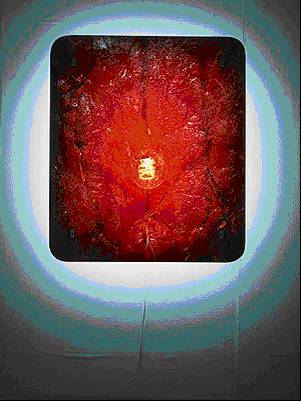
Ego Geometrica Sum Series
Helen had a deep interest in symmetry and its different forms and shapes. In the Ego Geometrica series, she used plywood as the base material. The plywood was molded into different sculptures and made to depict various that brought to memory symbols associated with childhood memories. She sculpted forms such as incubators, horses, boats, prams, schools, pianos, beds, etc.
In these works, she has shown the story of the human body from birth, to puberty, to maturity. She has used the method of photosensitizing the plywood along with large photographs of her nude body. She used multiple poses which were then printed on plywood. The body looks as if it is twisted and forced to turn to comply with forces of socialization. The body is not encased on the surface but rather pasted on it and gradually loses volume and depth, solidity, and dimensioning and ultimately becomes a trace in the structure that forms a part of the plywood grains.

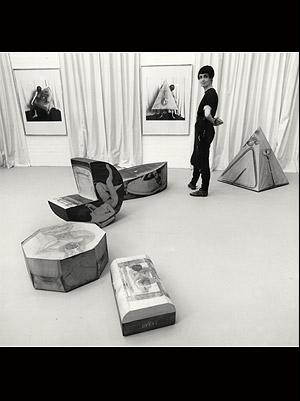
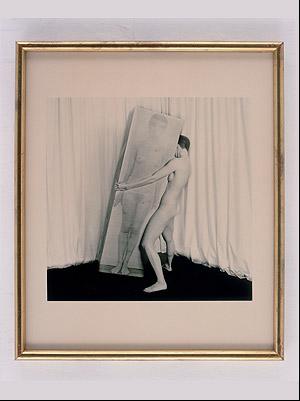
Piss Flowers (Effluvia)
Helen was instrumental in a very controversial work that has been widely critically acclaimed. The work was called the ‘Piss Flowers’. On a day when it was snowing, Helen and her partner David Notarius attempted something unique. They both urinated in the freshly fallen snow and this act created some unique patterns in the soft snow. Helen then made Bronze casts of the cavities and forms created by the hot urine in the snow. The results were an inversion of the human genitals with the central form created by the woman as penile and the pattern created by the man was labial (Effluvia, 1994).
These works showed the merging between body heat and meteorological frost, male and female urination, casting, and transience.
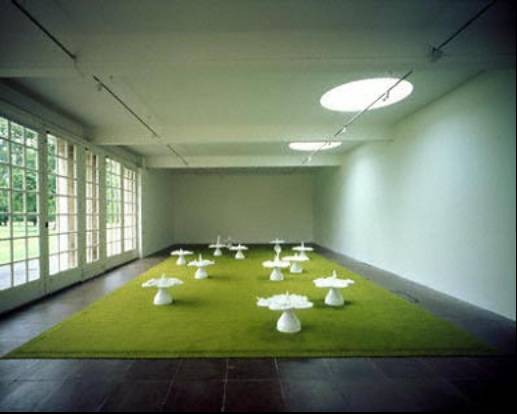
Meat Abstracts
In Meat Abstracts, she created a photographic layout that used pieces and cuts of meat and electric light. The works highlight her belief that people are afraid of flesh and trying to make the inside into the outside confronts the desire for beauty, for disguise with the reminder of what lies beneath the physical surface. This work is interpreted as a representation of the soul of a person as the light and the meat as the flesh to parallel the religious idea that there are two parts to us the body and soul. one of the photographs is made of a blonde braid of hair that is entwined with a worm-like intestine and both are attached to a wooden surface that symbolizes a grotesque but gorgeous and ornate totem, entwining blonde beauty with its carnal reality, corkscrewing glamour into guts, the inside into the outside. She placed large still-life Polaroid images of offal, cuts of meat, tongues, glands and juxtaposed them in velvet, silk, and fine leather. The works suggest that the viewer should confront feelings about recently dead meat in terms of one’s own flesh and bodily parts.
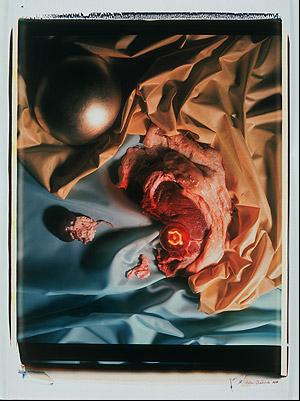
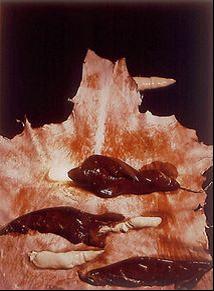
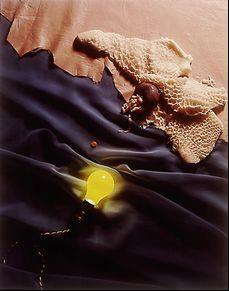
Cacao (Chocolate)
Helen Chadwick’s work Cacao was made by using a large vat that was filled with bubbling melted chocolate. In this work, what comes out is opacity and not transparency, raw materials and 3D forms rather than glossy disembodiment of Cibachrome photography.
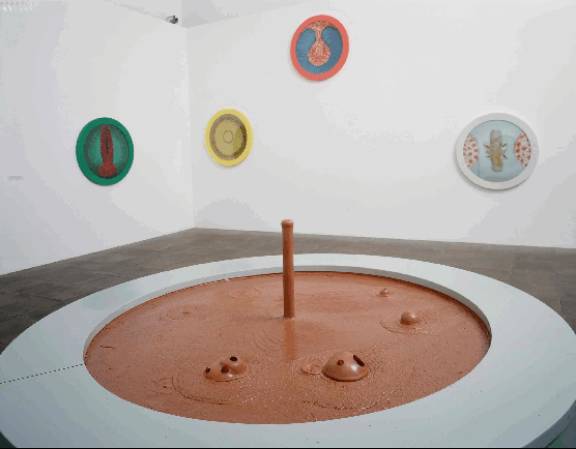
Viral Landscapes
Helen Chadwick made a number of creations with images of cells of her body. The cell pictures were superimposed on a picture of a rocky coastal landscape. The creations imply the how virus colonized the body and how the body, in turn, colonized the landscape. The works register the meeting of monumental landscape photos of the craggy shoreline of Pembrokeshire with overlaid streaks of cells taken from her cervix, ear, and mouth. The cells can be regarded as and the viruses can be regarded as offensive invading enemies of life. The viruses show that bodies are vulnerable to many incursions by different coded structures. The communication happens not in a high moral space but in an infinite continuity of matter that ushers difference, not as damage but remarks on potential (Bukantas Ann, 2005).
Helen’s art came to endorse the viral condition that evokes the function of the modern artist who is suffering from a full condition of oppositions and contradictions. The virus dismantles the concept of self-sufficiency in the cells and permits the flesh to become volatile and free to wander in complete abandon (James NP, 2005).

The Oval Court
The Oval Court was actually one of the pieces of her ‘Of Mutability’ works. This work is placed on the boundary between two kinds of intoxicating excess: joy and grief and each serve as the defining moment for the other. Oval Court shows a method of removing opposites and Helen creates an aggressive division between tears of over-fullness and the pool of plenty over which joy and grief, pleasure and pain coalesce in the search for fullness of feeling (Interview, 1990).
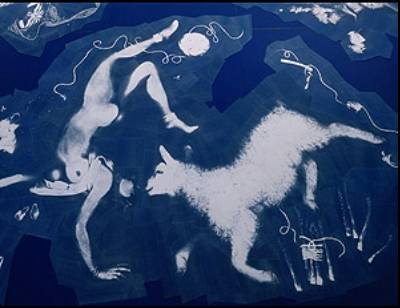
Wraiths to Pleasure
Helen Chadwick’s Wreaths to Pleasure are a series of thirteen large circular photo art with arrangements of brightly colored flowers that float on the surface of household liquids. Helen called them Bad Blooms and she used black red roses that floated on a creamy bath of paint in shades of ice blue household paint. In the artwork, she has placed an orchid in a mess of window cleaner liquid. These works highlight the message of mix and merge and show a clear distinction between fluid and static; clean and dirty; organic and toxic and evoke memories of unholy alliances (Kerek Rowan, May 2004).
Feelings such as rupture, inversion, schisms, amalgamations, and detours are used by Helen to tackle oppositions. She has weaved loops around binary categories. Her passion for contradiction has a different horizon of fulfillment and performs a transvaluation rather than devaluating the values. It presents a combination of the sublime that is linked with the tragic hyper sublime maximization of existence in particular (Bowen Jo, 2004).
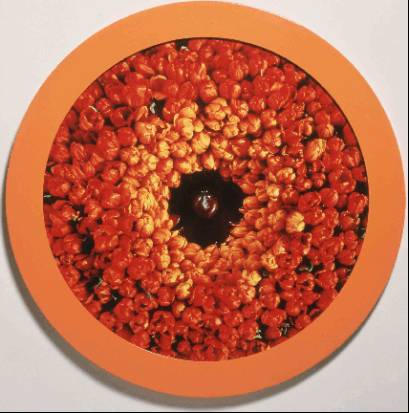
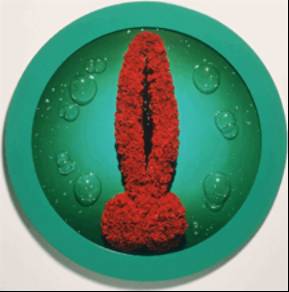
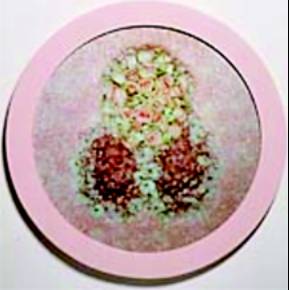
Abdelkader Benchamma
Abdelkader Benchamma is a young and upcoming artist of France and he specializes in creating a narration through sketches. The sketches are done as wall murals and on other types of media and he juxtaposes everyday symbols, men, and objects to create a narrative that evokes deep evocative metaphors. The uniqueness of Abdelkader is the concept of imagination, dreams, and creating a mural of utopian occurrences that would be almost impossible. He specializes in creating a blend of murals that pull the viewer with a stark simplicity and lines of power that extend from focal nodes and encompass the objects (ADN Galeria, 2007).
Analysis of his works
The drawings of Abdelkader Benchamma can be described as a written narration where mental and utopian incidents transcend into reality. He creates a somber and sober universe that has shades of grey, white, and black with monochromatic images in which absurdity and fantasy and the absurd fuse to create a personal universe that is entrapped on the media. His works display an innocence and simplicity combined with an ethereal sense of life, nature, and narration (Abdelkader Benchamma 2007).
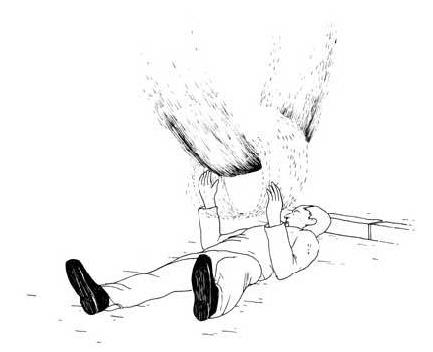
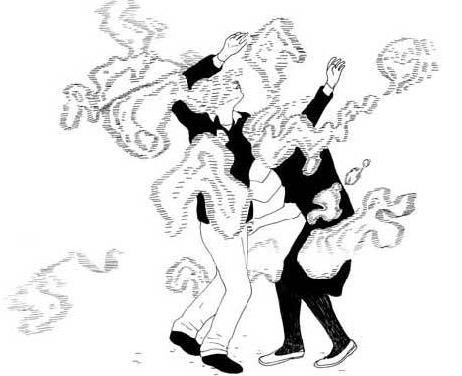
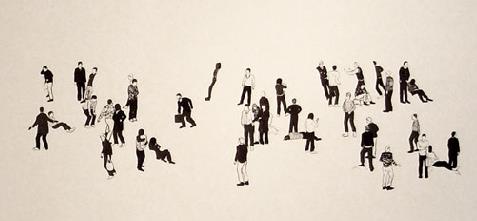
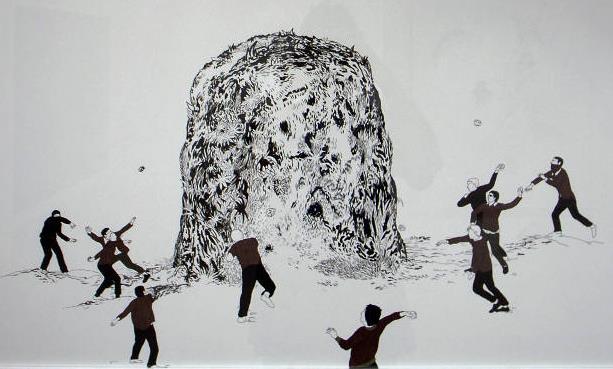
The drawings of Abdul Abdelkader Benchamma are emotional and display a transition of emotions that emanate from the inside and spread outside. The drawings delve deep into the repression, irrationality, and pent-up feelings that claim unique and personal utopias. The drawings also foster a debate between the low artistic results and high artistic capability. He uses drawing and sketching as an individual tool of grammar and depicts his way of thinking. He is influenced by graffiti, posters, cartoons, stencils, and attempts to create a dream that infuses a new conception of humorous society and presents a satirical perspective.
References
Bukantas Ann [2005]. ‘Transcript of audio download of ‘viral landscapes’ talk by Ann Bukantas’. Web.
Land M, 1997. An anxious I: stratagems for survival. Tropes of autofacture in a manmade world: the works and performances of Frida Kahlo, Madonna Ciccone, Cindy Sherman and Helen Chadwick. University of Keele: Doctorial Thesis
Power Camilla, Watts Ian, 1997. The woman with the zebra’s penis: gender, mutability and performance. Journal of the Royal Anthropological Institute. 3(3). p. 537.
Effluvia, 1994. Piss Flowers by Helen Chadwick: Preface (Catalogue). London: Serpentine Gallery.
James NP, 2005. Helen Chadwick: Of Mutability (CV/ Visual Arts Research). CV Publications. Web.
Interview [1990]. ‘BBC Interview of Helen Chadwick.
Kerek Rowan [2004]. ‘Bodily functions at the Barbican: BBC’. Web.
Bowen Jo, 2004. Helen Chadwick’s Cameo Works. Doctorial Thesis. University of Plymouth.
ADN Galeria[2007]. ‘Drawing & Dreaming’.
Abdelkader Benchamma [2007]. ‘They think that once they are there, it will be finished’. Web.
Stangos Nikos (2002), ‘Concepts of Modern Art ‘, London: Thames & Hudson Ltd.
Arnason, H. H. (1998), ‘History of Modern Art’, New York: Harry N. Abrams, 4th edition.
Matthew Collings (2001), ‘This Is Modern Art’, New York: Weidenfeld Nicolson Illustrated; New edition.
Anfam David (1990), ‘Abstract Expressionism’, London: Thames & Hudson Ltd.